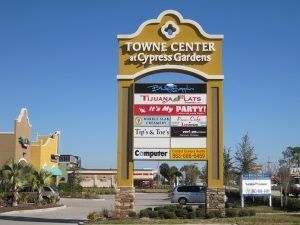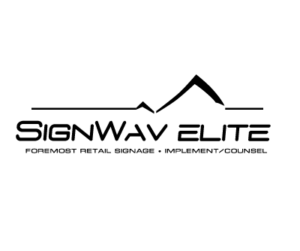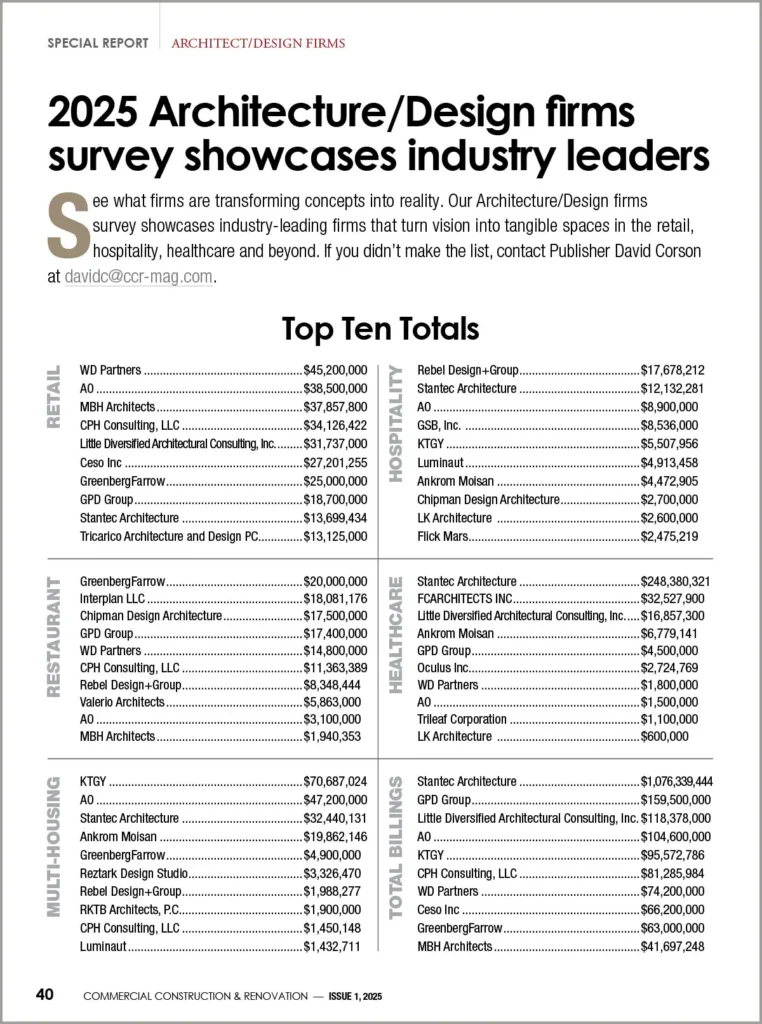 A quick Google News search on signage regulation uncovers a long list of stories from local jurisdictions all across the country discussing various codes for signs in their specific cities and counties. While most wouldn’t give much thought to the signage for a shopping center or stand-alone retail facility, the reality is that this is a very important aspect – for any business.
A quick Google News search on signage regulation uncovers a long list of stories from local jurisdictions all across the country discussing various codes for signs in their specific cities and counties. While most wouldn’t give much thought to the signage for a shopping center or stand-alone retail facility, the reality is that this is a very important aspect – for any business.
According to a FedEx study on the power of signage for small business, 76 percent of consumers surveyed had chosen to enter a store they had never before visited based purely on its signage.
While this may come as a surprise, roughly the same number of respondents had told someone about a store based entirely on signage. Conversely, 52 percent of customers surveyed by FedEx state that they’re less willing to shop at a store with poor signage. Clearly, this study highlights the importance of signage with in retail.
Believe it or not, many argue that is one of the most important elements in a design. It is the first element that engages a customer.
In fact, signage and graphics tend to define how visitors to a shopping center or retail destination perceive, interact, and engage with the space. Often, it is the first thing shoppers see when they arrive and continues to provided visual cues that unify the project throughout their visit.
From directional and wayfinding signage to recognizable symbols of recognizable tenants and cultural icons, the writing is literally on the wall when it comes to the shopper experience.
An example of the benefits of signage can be found at a mixed-used development in a suburb of Washington, D.C. Spread over several city blocks, the development was difficult to navigate – retail tenants had no visibility on the main thoroughfare, parking lots were hard to find, and directional signage was non-existent. So too was a brand for the entire area.
After a complete overhaul, the full scope of signage and graphics were used to showcase a strong brand at the main thoroughfare. New signage and thought-out wayfinding locations were used on both interior and exterior areas to increase project awareness, create greater navigation into and throughout the site, and elevate tenant presence.
Paired with a new identity and marketing program, this facelift helped to re-launch the property to both locals and consumers outside the area, ultimately leading to a significant increase in consumer traffic.
According to a FedEx study on the power of signage for small business, 76 percent of consumers surveyed had chosen to enter a store they had never before visited based purely on its signage.
Know the proper steps
We all want the biggest, most identifiable signage possible but ordinances are put in place to protect property values, promote traffic safety, and preserve the area’s atmosphere. They have been established serve to reduce the sign clutter and resulting ineffectiveness by regulating the size, placement, and certain aspects of design.
Even if a designer provides a tenant with stunning architectural elevations and renderings that show signage, tenants and property owners should keep in mind that it doesn’t mean it is actually allowed in that particular district.
While renderings of a new project may include digital billboards, wall and extreme storefront graphics, along with oversized signage, there is a good chance the zoning only allows for a portion of what was shown.
Before jumping into the signage process, it is best to understand these steps to save time, and ultimately, money.
- Determine your property’s zoning district
- Determine who regulates your sign code
- Determine your property “Plat Map” or line locations and measurements
- Determine the Sign Code
Something else to do before starting the signage process: investigate nearby properties. But be cautious – new sign panels in an old structure likely means that the zoning changed and the allowable square footage for signage has been reduced. With that being said, if an individual is acquiring retail center or space with existing signage, it is important to look into the code before removing or updating the sign.
The last thing a property owner or a tenant wants to do is remove a grandfathered sign before understanding if square footage will be lost or a sign height is no longer permitted.
Avoid taking two steps back
Allowing signage to be blindly designed with no regard to regulation and restriction is a waste of time and money. Zoning regulations and signage code should be fully understood and strategized before putting pen to paper. Decide whether the established code will be followed or if the tenant is going to be shooting for a variance. Even if the plan is to apply for variances, do some work up front.
A tenant needs to understand, if a specific request is allowed in other districts or located close to the site, what are associated fees, and what is the probability of receiving a variance? Consultants should work with their clients and guide them through the process. Before any design gets started, it is best to research and know the codes for each business or shopping center.
For retail tenants, a shopping center may have its own criteria that will add another set of rules and restrictions. While tenants can work with the landlord to ask for specifics most of the time, there are instances when these “wants” need to be submitted to the local jurisdiction and landlord flexibility becomes very restricted.
A surefire way to ensure compliance is literally as easy as visiting the city or county’s website. The best place to look is in the zoning, development, or land use section of the website. Signage codes are usually laid out in a standard outline form, but more recently there has been a trend to provide a detailed package, which looks more like tenant sign criteria that a sign ordinance.
The packaged codes contain a detailed summary of the sign types, their sizes, placement, limitations and restrictions. It will also outline any additionally allowance or design restrictions due to the location of the signage. Another option is to visit Municode, a code provider website. Or, if these options don’t work, call the zoning office and speak to one of the officials.
When designed right, signage can have a significant and positive impact on retail centers – be it a stand-along building or a large, mixed-use shopping center. But it is important for tenants and property owners to do their homework first and understand local zoning regulations. This will save time and money – and many headaches – downstream.
_____________________________________________________________
Curtiss Taylor is director of graphics at inPLACE Design, an architecture, planning, and design firm with the experience to create engaging places in cities, towns, and suburbs throughout the United States and around the world. For more information, contact the author at ctaylor@inplace-design.com, visit www.inplace-design.com, or follow them @inPLACEDesign.




























